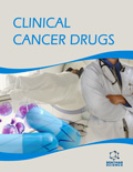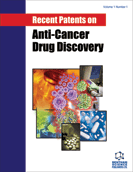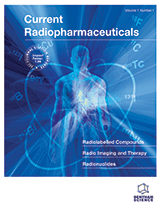Abstract
Background and Objective: The extensive clinical use of capecitabine may be associated with important adverse drug reactions. The aim of this study was to prevent the risk of toxicities in patients who are candidates to capecitabine treatment.
Methods: Pharmacokinetic parameters of 5-fluorouracil (5-FU)/ 5-fluoro-5,6-dihydrouracil (5-FDHU) were examined in 133 cancer patients given a test dose of 5-FU (250 mg/m2) 2 weeks before starting capecitabine treatment. 5-FU and 5-FDHU plasma levels were measured, and related pharmacokinetic parameters were calculated. Toxicities were graded according to Common Toxicity Criteria (CTC) criteria.
Results: Some significant relationships between 5-FU and 5-FDHU pharmacokinetic parameters and capecitabine toxicities were found. Higher values of 5-FU AUC0-∞ and t½β were found in patients who experienced grade ≥2 dermatitis, stomatitis and nausea during capecitabine chemotherapy. Moreover tmax higher than the threshold limit of 15 minutes was predictive for the risk of developing severe diarrhea after the first cycle of capecitabine therapy.
Conclusion: This study suggests a successful approach for preventing moderate/severe toxicities in cancer patients who are candidates to capecitabine treatment by analyzing the 5-FU and 5-FDHU pharmacokinetic parameters after the administration of a reduced 5-FU test dose.
Keywords: 5-Fluorouracil, test dose, pharmacokinetics, capecitabine, cancer, toxicities.
Graphical Abstract
Clinical Cancer Drugs
Title:Prevention of Capecitabine Toxicity Using a 5-FU Test Dose
Volume: 4
Author(s): Teresa Di Desidero, Cecilia Barbara, Paola Orlandi, Anna Fioravanti, Fotios Loupakis, Chiara Cremolini, Giacomo Allegrini, Antonello Di Paolo, Alfredo Falcone, Romano Danesi and Guido Bocci*
Affiliation:
- Division of Pharmacology, Department of Experimental and Clinical Medicine, University of Pisa, Pisa,Italy
Keywords: 5-Fluorouracil, test dose, pharmacokinetics, capecitabine, cancer, toxicities.
Abstract: Background and Objective: The extensive clinical use of capecitabine may be associated with important adverse drug reactions. The aim of this study was to prevent the risk of toxicities in patients who are candidates to capecitabine treatment.
Methods: Pharmacokinetic parameters of 5-fluorouracil (5-FU)/ 5-fluoro-5,6-dihydrouracil (5-FDHU) were examined in 133 cancer patients given a test dose of 5-FU (250 mg/m2) 2 weeks before starting capecitabine treatment. 5-FU and 5-FDHU plasma levels were measured, and related pharmacokinetic parameters were calculated. Toxicities were graded according to Common Toxicity Criteria (CTC) criteria.
Results: Some significant relationships between 5-FU and 5-FDHU pharmacokinetic parameters and capecitabine toxicities were found. Higher values of 5-FU AUC0-∞ and t½β were found in patients who experienced grade ≥2 dermatitis, stomatitis and nausea during capecitabine chemotherapy. Moreover tmax higher than the threshold limit of 15 minutes was predictive for the risk of developing severe diarrhea after the first cycle of capecitabine therapy.
Conclusion: This study suggests a successful approach for preventing moderate/severe toxicities in cancer patients who are candidates to capecitabine treatment by analyzing the 5-FU and 5-FDHU pharmacokinetic parameters after the administration of a reduced 5-FU test dose.
Export Options
About this article
Cite this article as:
Di Desidero Teresa, Barbara Cecilia , Orlandi Paola , Fioravanti Anna , Loupakis Fotios, Cremolini Chiara , Allegrini Giacomo , Di Paolo Antonello , Falcone Alfredo, Danesi Romano and Bocci Guido *, Prevention of Capecitabine Toxicity Using a 5-FU Test Dose, Clinical Cancer Drugs 2017; 4 (2) . https://dx.doi.org/10.2174/2212697X04666170504144550
| DOI https://dx.doi.org/10.2174/2212697X04666170504144550 |
Print ISSN 2212-697X |
| Publisher Name Bentham Science Publisher |
Online ISSN 2212-6988 |
 51
51
- Author Guidelines
- Bentham Author Support Services (BASS)
- Graphical Abstracts
- Fabricating and Stating False Information
- Research Misconduct
- Post Publication Discussions and Corrections
- Publishing Ethics and Rectitude
- Increase Visibility of Your Article
- Archiving Policies
- Peer Review Workflow
- Order Your Article Before Print
- Promote Your Article
- Manuscript Transfer Facility
- Editorial Policies
- Allegations from Whistleblowers
- Announcements
Related Articles
-
Botulinum Toxin: Pharmacology and Clinical Developments: A Literature Review
Medicinal Chemistry 3-Bromopyruvate: A New Targeted Antiglycolytic Agent and a Promise for Cancer Therapy
Current Pharmaceutical Biotechnology Bcl-2 Targeted-Therapy for the Treatment of Head and Neck Squamous Cell Carcinoma
Recent Patents on Anti-Cancer Drug Discovery Potentiation of Anti-Cancer Treatment by Modulators of Energy Metabolism
Current Pharmaceutical Biotechnology Can we Target the Chemokine Network for Cancer Therapeutics?
Current Cancer Drug Targets The Role of NF-κB Inhibitors in Cell Response to Radiation
Current Medicinal Chemistry The Role of Mammalian Target of Rapamycin (mTOR) Inhibitors in the Treatment of Solid Tumors
Current Cancer Therapy Reviews “Smart” Nanocarriers: A New Paradigm for Tumor Targeting Drug Delivery Systems
Drug Delivery Letters DNA Microarray-Based Gene Expression Profiling in Cancer: Aiding Cancer Diagnosis, Assessing Prognosis and Predicting Response to Therapy
Current Pharmacogenomics Pediatric Differentiated Thyroid Cancer: When to Perform Conservative and Radical Surgery
Current Pediatric Reviews Current State of Development of Genome Analysis in Livestock
Current Genomics The Ubiquitin-Proteasome System (UPS) and the Mechanism of Action of Bortezomib
Current Pharmaceutical Design From the Design to the Clinical Application of Thromboxane Modulators
Current Pharmaceutical Design Editorial (Thematic Issue: Targeting Anti-Cancer Agents and Cancer Treatments)
Anti-Cancer Agents in Medicinal Chemistry Patent Analysis as a Tool for Research Planning: Study on Natural Based Therapeutics Against Cancer Stem Cells
Recent Patents on Anti-Cancer Drug Discovery The Current Role of PET/CT in Radiotherapy Planning
Current Radiopharmaceuticals Hypoxia-Inducible Factors and Sphingosine 1-Phosphate Signaling
Anti-Cancer Agents in Medicinal Chemistry The Changing Face of HIV/AIDS in Treated Patients
Current HIV Research Recent Contributions of Elastin-Like Recombinamers to Biomedicine and Nanotechnology
Current Topics in Medicinal Chemistry Part II: Targeted Particles for Imaging of Anticancer Immune Responses
Current Drug Delivery





















